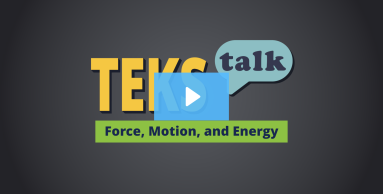
Knowledge and Skills Statement
The following is an example of how to assess proficiency of this student expectation (SE) or a portion of the SE.
Provide the students with a selection of objects and light sources. Some objects provided might include construction paper or folders, cling wrap, and tissue paper. Using the objects provided, students should be able to demonstrate that objects that are transparent, translucent, and opaque allow different amounts of light to travel through them.
Students should be able to explain that an object such as a folder blocks all of the light and creates a shadow. They should also explain that an object such as tissue paper lets less light through than an object like a piece of cling wrap, but still lets some light through. While kindergarten students should be able to describe how the light and shadows are different with different objects, they are not expected to use the terms transparent, translucent, or opaque.
The further explanation is designed to be a resource for educators that helps them better understand the topic their students are learning. Further explanations may be written at a more complex level than would be expected for students at the grade level.
Examples of transparent objects include windows and clear plastic water bottles. Translucent objects include wax paper and frosted glass. Opaque objects include cell phones and tree trunks.
Research
Iowa Regents’ Center for Early Developmental Education. 2023. “Shadows.” https://files.eric.ed.gov/fulltext/EJ1081344.pdf
Summary: This review paper encourages teachers to utilize three principles of learning: students’ prior knowledge about shadows, factual and conceptual knowledge related to shadows, and metacognition requiring students to think about their personal understanding about shadows; thereby, promoting students’ science literacy.
